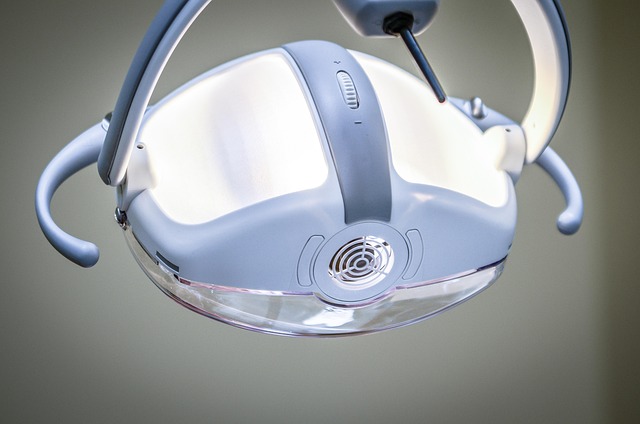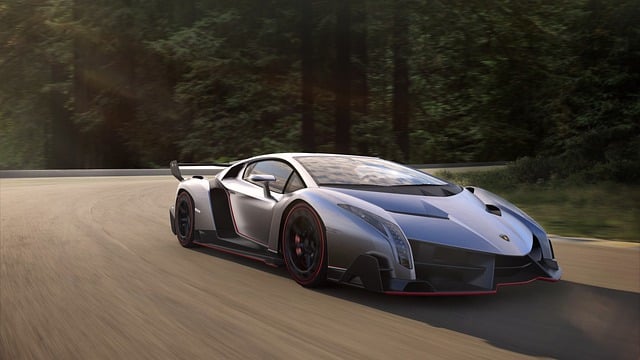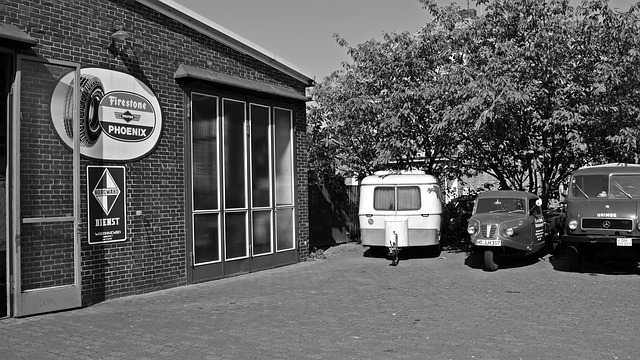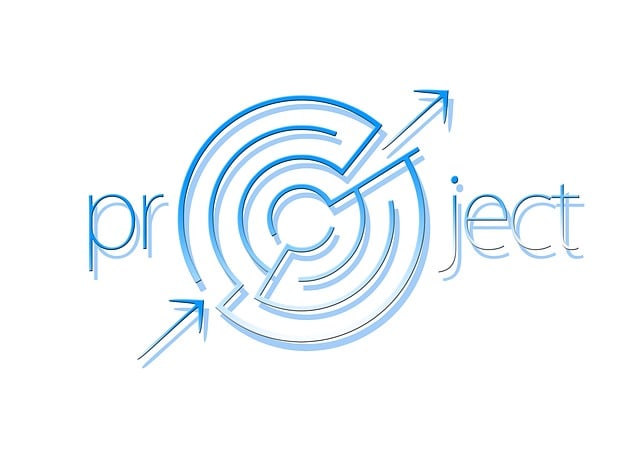Expert Technicians Essential for Secure Mercedes MBUX System Replacement
Replacing the Mercedes MBUX system is not a DIY task due to its intricate design and critical vehicl…….
In the rapidly evolving automotive landscape, the Mercedes-Benz User Experience (MBUX) system has emerged as a game-changer, revolutionizing how drivers interact with their vehicles. The MBUX system, with its advanced artificial intelligence and user-centric design, offers a seamless and personalized driving experience. However, as technology advances, the concept of replacing or upgrading this cutting-edge system to keep pace with evolving customer needs and market trends has gained significant traction. This article delves into the multifaceted world of Mercedes MBUX system replacement, exploring its various facets, implications, and potential future directions. By examining the current state, global impact, technological advancements, regulatory environment, and real-world applications, we aim to provide an authoritative guide to understanding this transformative process.
Mercedes MBUX system replacement refers to the process of either entirely substituting or substantially enhancing the existing MBUX infotainment and driver assistance system with updated hardware, software, and features. The MBUX system is a sophisticated amalgamation of hardware and software designed to provide an intuitive, adaptive, and intelligent user interface for Mercedes-Benz vehicles. Its core components include:
Hardware: This encompasses the vehicle’s computer systems, sensors, microphones, speakers, and display units, which collectively form the physical backbone of the MBUX system. The hardware is designed to be robust, scalable, and capable of handling complex tasks.
Software: The MBUX software is a sophisticated AI-driven platform that enables voice recognition, natural language processing, context awareness, and machine learning capabilities. It includes various modules for functions like navigation, media playback, phone integration, vehicle settings, and predictive assistance.
User Interface: The system offers multiple interaction methods, including voice commands, touch controls on the center display, and gesture controls. Its intuitive design ensures that drivers can access information and control various functions effortlessly while keeping their eyes on the road.
The MBUX system was first introduced by Mercedes-Benz in 2018 as a flagship infotainment and driver assistance package for its luxury vehicles. It represented a significant departure from traditional automotive systems, focusing on human-machine interaction and personalization. Over the years, it has evolved through several updates, incorporating advanced machine learning algorithms, improved natural language processing, and enhanced connectivity features.
The significance of MBUX system replacement lies in its potential to:
Enhance Driver Experience: By offering a more intuitive, responsive, and personalized interface, the updated system can improve driver satisfaction and reduce distraction while driving.
Stay Ahead of Market Trends: Automotive technology is rapidly advancing, with new trends like voice control, over-the-air software updates, and enhanced AI capabilities gaining traction. Replacing or upgrading MBUX ensures that Mercedes-Benz vehicles remain competitive in the market by offering the latest features.
Improve Safety: Advanced driver assistance systems (ADAS) are becoming essential for modern vehicles. Upgrading MBUX can integrate or enhance these safety features, contributing to overall vehicle safety and reducing the risk of accidents.
The impact of Mercedes MBUX system replacement extends far beyond Germany’s borders, as global automotive manufacturers strive to stay competitive in this rapidly evolving sector.
Europe: Leading European carmakers like BMW and Audi have embraced the MBUX concept and integrated similar systems into their vehicle lines. These systems are often developed in collaboration with tech giants, ensuring cutting-edge technology.
North America: In the US and Canada, luxury car brands such as Tesla and Lucid Motors are known for their advanced infotainment systems, which rival Mercedes MBUX in terms of features and performance. This intense competition drives continuous innovation in the industry.
Asia Pacific: Japanese and South Korean automakers are also investing heavily in smart cockpit technology. Toyota’s ‘Toyota Smart Connect’ and Hyundai’s ‘BlueLink’ are examples of regional advancements that compete globally in terms of functionality and user experience.
Voice Control and Natural Language Processing: The integration of voice assistants like Amazon Alexa and Google Assistant into vehicles is gaining momentum. This trend aligns with Mercedes MBUX’s capabilities, encouraging system developers to enhance voice recognition and natural language understanding.
Over-the-Air (OTA) Software Updates: Manufacturers are increasingly enabling remote software updates for infotainment systems, allowing them to introduce new features and fix bugs without requiring physical visits to dealerships. This trend is crucial for MBUX replacement as it ensures vehicles remain up-to-date with the latest technology.
Personalization and Context Awareness: Modern driver assistance systems are moving towards hyper-personalized experiences, adapting to individual drivers’ preferences and behaviors. Mercedes MBUX system replacements should focus on enhancing these features to offer a unique, tailored user experience.
The economic aspects of Mercedes MBUX system replacement are multifaceted, impacting both the automotive industry and the broader technology sector.
Hardware and Software Development: The process involves significant investment in research and development (R&D) for hardware components, such as processors, sensors, and display units, as well as software modules, machine learning algorithms, and user interface design.
Supply Chain Implications: Upgrading or replacing MBUX requires a robust supply chain to source the necessary components. This includes partnerships with technology suppliers, chip manufacturers, and software development firms.
Vehicle Pricing and Customer Perception: Vehicles equipped with advanced infotainment systems often command premium prices. The MBUX system replacement should be strategically priced to maintain or enhance vehicle value without deterring customers.
Automotive Industry Growth: The global automotive market is experiencing a digital transformation, driven by the integration of smart technologies. Mercedes MBUX system replacements contribute to this trend, fostering innovation and driving economic growth within the industry.
Technology Sector Integration: As vehicles become more connected and automated, there is a growing convergence between the auto industry and tech sector. This fusion creates new business models, job opportunities, and revenue streams, shaping the future of mobility.
The technological advancements driving Mercedes MBUX system replacement are at the forefront of automotive innovation.
Natural Language Understanding: Continuous improvements in natural language processing (NLP) allow for more accurate voice recognition and better context awareness, enabling systems to interpret complex commands and deliver relevant responses.
Predictive Analytics: Advanced machine learning algorithms can analyze driver behavior and preferences, predicting and suggesting actions or adjustments, thus enhancing the overall driving experience.
Edge Computing: Implementing edge computing capabilities in vehicles enables real-time data processing, reducing latency for tasks like navigation and predictive assistance.
5G Connectivity: The integration of 5G networks allows for faster data transfer rates, enabling advanced driver assistance systems (ADAS) and over-the-air software updates to their full potential.
Gossamer Interfaces: Future MBUX replacements might adopt gossamer interfaces, which use advanced materials and projection technologies to create immersive, holographic displays, enhancing visual and haptic feedback.
Gesture and Eye Tracking Control: Advanced gesture and eye-tracking technologies offer intuitive alternative means of control, allowing drivers to interact with the system without removing their hands from the steering wheel.
The development and implementation of Mercedes MBUX system replacements are subject to various policies and regulations that ensure safety, data privacy, and ethical considerations.
Automotive Safety Standards: Vehicles equipped with advanced driver assistance systems must comply with stringent safety standards set by regional regulatory bodies, such as the National Highway Traffic Safety Administration (NHTSA) in the US and European Union (EU) regulations.
Data Privacy Laws: With the collection and processing of vast amounts of driver data, companies must adhere to data protection laws like the General Data Protection Regulation (GDPR) in Europe and the California Consumer Privacy Act (CCPA) in the US.
Intellectual Property Rights: Patents and copyrights protect the proprietary technologies and designs employed in MBUX replacements, ensuring fair competition and encouraging innovation.
Safety Certification: Manufacturers must conduct rigorous testing and validation to ensure that system upgrades meet safety standards. This process involves extensive simulation, dynamic testing, and real-world trials.
Data Security and Privacy: Protecting driver data is paramount. Companies must implement robust security measures to safeguard personal information and ensure transparency in data collection and usage practices.
Ethical Considerations: As AI systems become more sophisticated, ethical guidelines are essential. Developers should consider issues like algorithmic bias, fairness, and accountability to ensure the responsible use of technology.
Despite its potential benefits, Mercedes MBUX system replacement faces several challenges and criticisms that require careful consideration and strategic solutions.
Initial High Costs: Upgrading or replacing existing systems can be expensive, especially for smaller automakers with limited resources. This challenge is mitigated by strategic partnerships and scalable development processes.
Hardware Compatibility: Ensuring seamless integration of new hardware components with existing vehicle architectures and electrical systems can be complex, requiring extensive engineering efforts.
Data Privacy Concerns: As MBUX systems collect vast amounts of driver data, ensuring data privacy and security is crucial. Transparency and user control over data usage are essential to building trust.
Over-reliance on AI: Critics argue that excessive reliance on AI might lead to a loss of human control over vehicles. Manufacturers should emphasize the dual-mode approach, allowing drivers to switch between AI-assisted and manual control whenever needed.
Ethical Data Usage: There are concerns about algorithmic bias and unfair data practices. Companies must adopt ethical guidelines, conduct regular audits, and be transparent about data usage to address these issues.
Limited Accessibility: Advanced systems might exclude individuals with disabilities. Developers should consider universal design principles and provide accessibility options like voice control and screen readers for all users.
Real-world applications of Mercedes MBUX system replacements offer valuable insights into their effectiveness, benefits, and lessons learned.
Tesla’s Autopilot and subsequent FSD capabilities represent a significant advancement in driver assistance systems. By leveraging vast amounts of data from its global fleet and employing advanced machine learning algorithms, Tesla has achieved impressive levels of autonomy. This system continuously learns and improves through over-the-air updates, offering a personalized driving experience. The key lessons:
Data-driven Innovation: Collectively generated data from a large user base enables faster development cycles and continuous improvement.
User Engagement: Tesla’s approach encourages driver engagement by providing a sense of partnership in the vehicle’s learning process.
The Mercedes-Benz EQS, an electric sedan, showcases the evolution of the MBUX system. With a focus on sustainability and cutting-edge technology, the EQS features an enhanced MBUX system with improved voice control, gesture recognition, and a seamless integration of vehicle and smartphone apps. Key takeaways:
Sustainability Focus: The EQS emphasizes sustainable materials and energy-efficient technologies, aligning with modern consumer values.
Seamless Integration: The updated MBUX offers a unified experience across various devices, ensuring consistency in user interaction.
Waymo, a subsidiary of Alphabet Inc., has developed an advanced driver assistance system (ADAS) that goes beyond traditional automation. Their system uses a combination of cameras, sensors, and AI to enable fully autonomous driving. The MBUX replacement in this context involves integrating advanced perception and decision-making capabilities into the vehicle’s architecture. Observations:
Hybrid Approach: Waymo employs a hybrid system, combining machine learning with sensor fusion for robust perception and decision-making.
Real-world Testing: Extensive real-world testing is crucial for developing reliable autonomous driving systems, ensuring their safety and effectiveness.
The future of Mercedes MBUX system replacement is filled with promising possibilities, as technology continues to evolve and customer expectations grow.
Autonomous Driving: As autonomous vehicles gain traction, MBUX replacements will play a pivotal role in enabling advanced driver assistance systems (ADAS) and fully autonomous driving capabilities.
Personalized In-Vehicle Experiences: With the integration of more user data and AI, future systems can offer hyper-personalized experiences tailored to individual drivers’ tastes and preferences.
Extended Reality (XR): Augmented reality (AR) and virtual reality (VR) technologies could enhance in-cabin entertainment and navigation, providing immersive experiences for passengers.
Quantum Computing: While still in its early stages, quantum computing has the potential to revolutionize AI algorithms, enabling faster processing and more complex decision-making for advanced driver assistance systems.
Edge Cloud Integration: Combining edge computing with cloud services can provide a powerful architecture for real-time data processing and analytics, enhancing vehicle performance and safety.
Collaborative Vehicle Systems: Future vehicles might communicate with each other and infrastructure, enabling better traffic flow, reduced congestion, and improved overall transportation efficiency.
Mercedes MBUX system replacement is not merely a technological upgrade; it represents a significant step towards the future of mobility. As we’ve explored, this process involves complex interactions between hardware, software, policy, and user expectations. The global impact is profound, with automakers investing heavily in smart cockpit technology to stay competitive.
The future prospects for MBUX replacements are exciting, offering opportunities to enhance driver experiences, improve safety, and foster sustainable transportation. By embracing emerging technologies, addressing challenges head-on, and prioritizing customer needs, the automotive industry can continue to revolutionize the way we move. As technology advances, the Mercedes MBUX system and its successors will play a pivotal role in shaping the mobility landscape for years to come.
How does the MBUX system benefit drivers?
The MBUX system offers numerous advantages, including improved driver assistance through advanced sensors and AI, enhanced navigation with real-time traffic updates, personalized settings, and efficient vehicle control via voice commands or gesture recognition.
Are there any safety risks associated with advanced driver assistance systems (ADAS)?
While ADAS aims to improve safety, there are potential risks. These include system failures, cybersecurity threats, and reliance on driver attention. Rigorous testing, redundancy mechanisms, and clear user guidelines are essential to mitigate these risks.
How does the MBUX replacement impact vehicle resale value?
Upgrading a vehicle’s infotainment system can enhance its overall value, especially if it includes advanced features like autonomous driving capabilities or immersive entertainment systems. However, individual market dynamics and consumer preferences also play significant roles in resale values.
Can the MBUX system be customized to suit individual needs?
Yes, the MBUX system is designed with customization in mind. Users can personalize various settings, including language preferences, voice commands, and vehicle behavior, to align with their unique requirements and preferences.
What are the environmental considerations in MBUX replacements?
Environmental sustainability is an increasingly important factor. Future MBUX systems might incorporate eco-friendly materials, energy-efficient hardware, and software optimizations to reduce overall environmental impact, contributing to a greener transportation sector.

Replacing the Mercedes MBUX system is not a DIY task due to its intricate design and critical vehicl…….

Software licensing plays a critical role in replacing the Mercedes MBUX system, dictating customizat…….

The Mercedes MBUX system is an innovative infotainment and assistance suite that integrates seamless…….

The Mercedes MBUX system, celebrated for its advanced features and user-friendly design, can encount…….

The Mercedes MBUX system offers advanced infotainment and safety features, but third-party shops pre…….

The Mercedes MBUX (Mercedes-Benz User Experience) system, a cutting-edge automotive tech suite, offe…….

TL;DR:Replacing a Mercedes MBUX system requires skilled technicians to meticulously disassemble the…….

Unsecure coding during Mercedes MBUX system replacements poses significant risks, potentially enabli…….